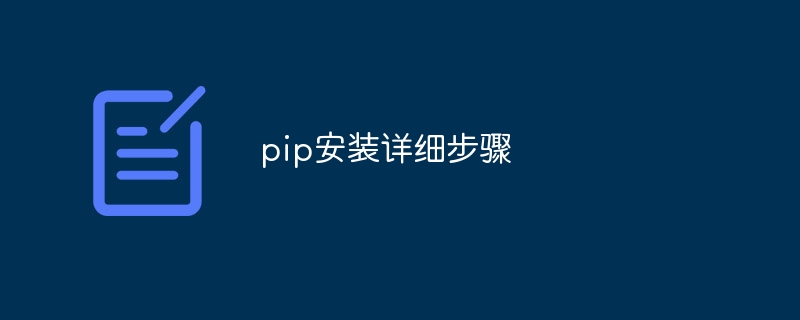
Installation steps: 1. Make sure Python has been correctly installed on your computer; 2. Download the "get-pip.py" script; 3. Press the Win R key, then enter cmd and press the Enter key to open the command line window; 4. In the command line window, use the cd command to switch to the directory where "get-pip.py" is located; 5. Execute the installation command; 6. Verify the installation result.

#pip is a command line tool for installing and managing Python packages. It can help users install, upgrade and uninstall Python packages conveniently.
The following are the detailed steps for pip installation:
Download the get-pip.py script: Open the browser, visit the pip official website (https://pip.pypa.io/en/stable/installing/), find and download at the bottom of the page get-pip.py script. You can directly click the link to download, or right-click the link in the browser and select "Save As" to save the script locally.
Open the command line window: In the Windows operating system, you can open the command line window by pressing the Win R key, then entering cmd and pressing the Enter key. In macOS and Linux operating systems, you can open the Terminal by pressing the Ctrl Alt T key.
Switch to the directory where get-pip.py is located: In the command line window, use the cd command to switch to the directory where get-pip.py is located. For example, if the script is saved in the user's Downloads folder, you can switch to that directory using the following command:
cd Downloads
python get-pip.py
This will run the get-pip.py script to automatically download and install the latest version of pip.
pip --version
If the installation is successful, the command line window will display the version information of pip .
At this point, pip has been successfully installed on your computer. You can now use pip to install, upgrade, and uninstall Python packages.
The following are some commonly used pip commands:
pip install package_name
where package_name is to be installed The name of the package.
pip install --upgrade package_name
where package_name is the name of the package to be upgraded.
pip uninstall package_name
where package_name is the name of the package to be uninstalled.
pip list
Hope the above steps and commands are helpful to you!
The above is the detailed content of pip installation detailed steps. For more information, please follow other related articles on the PHP Chinese website!




